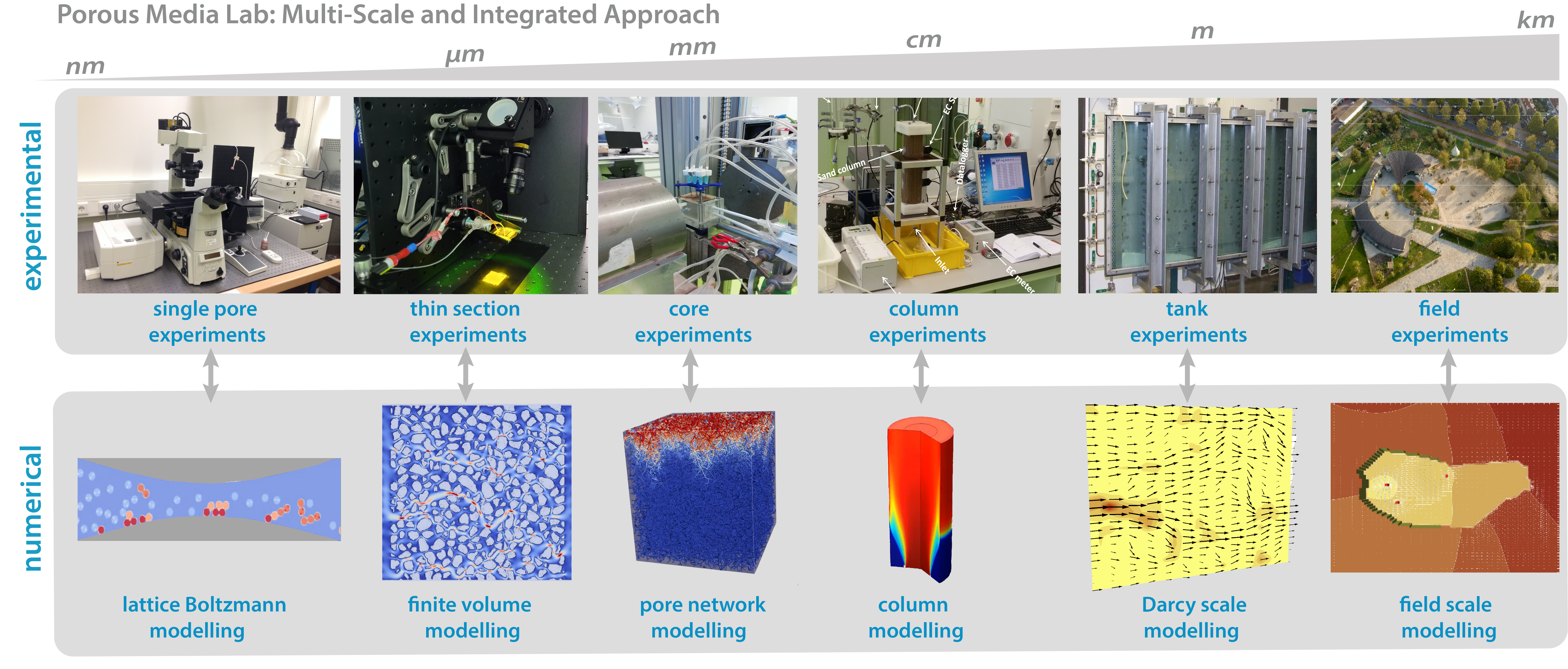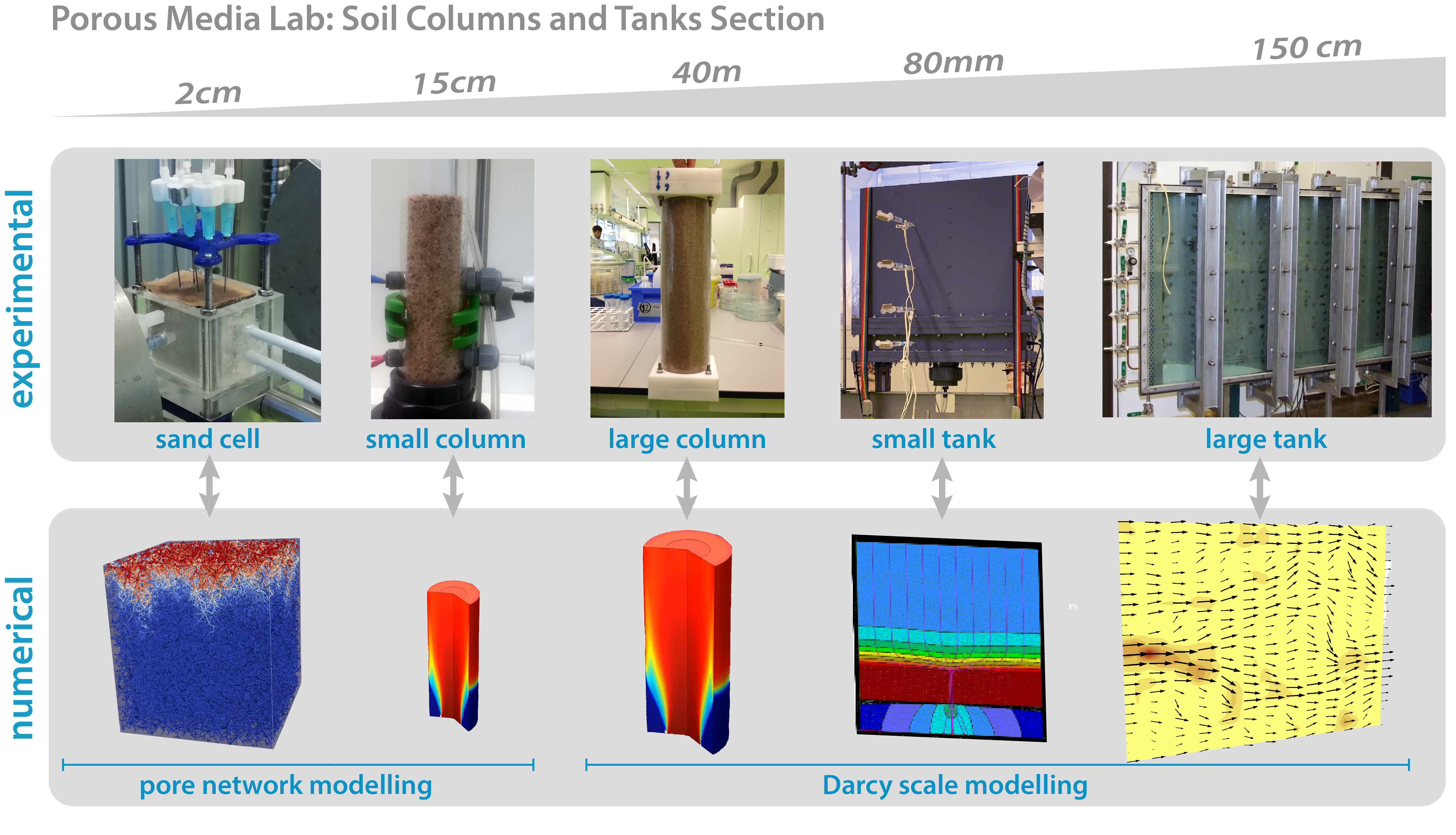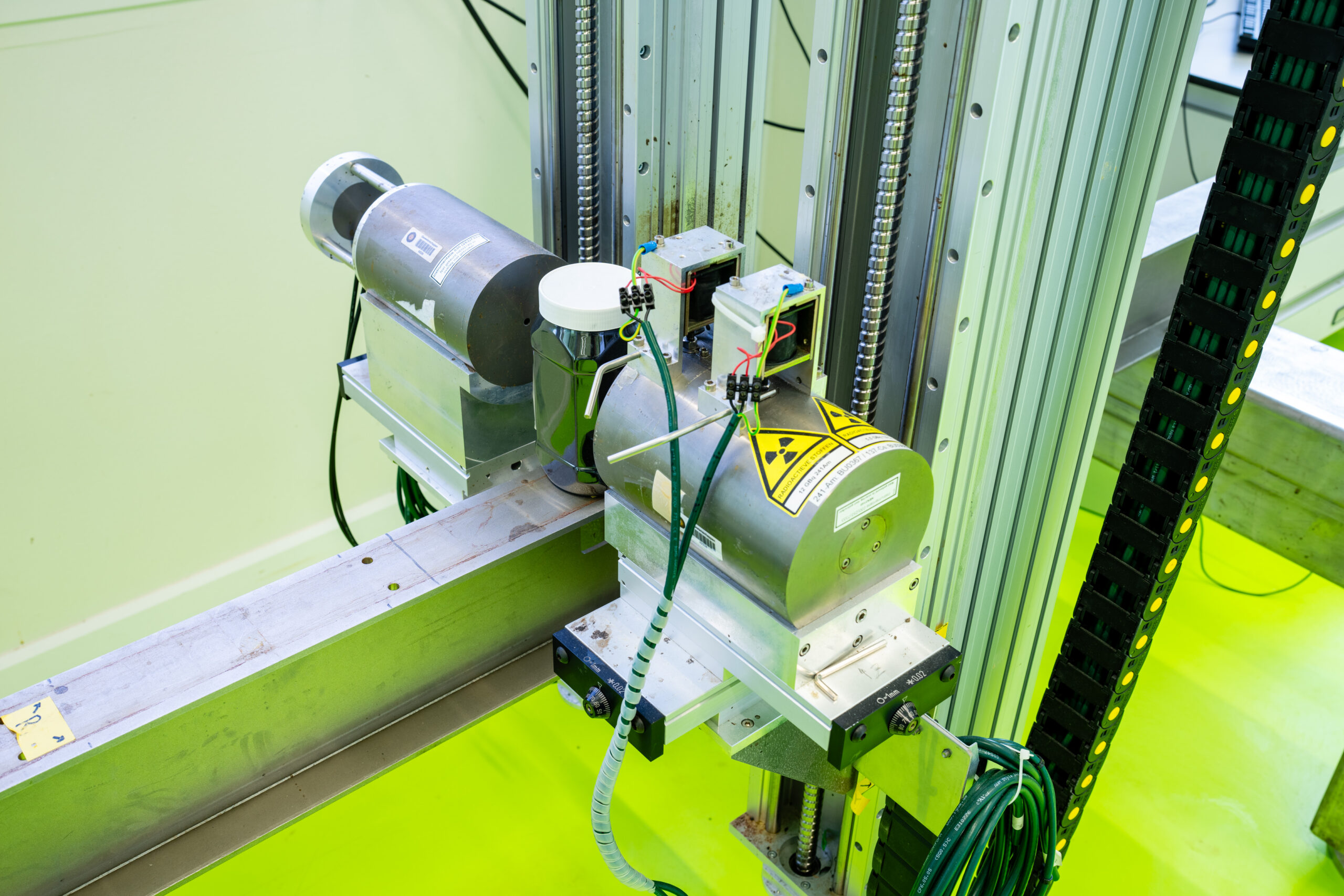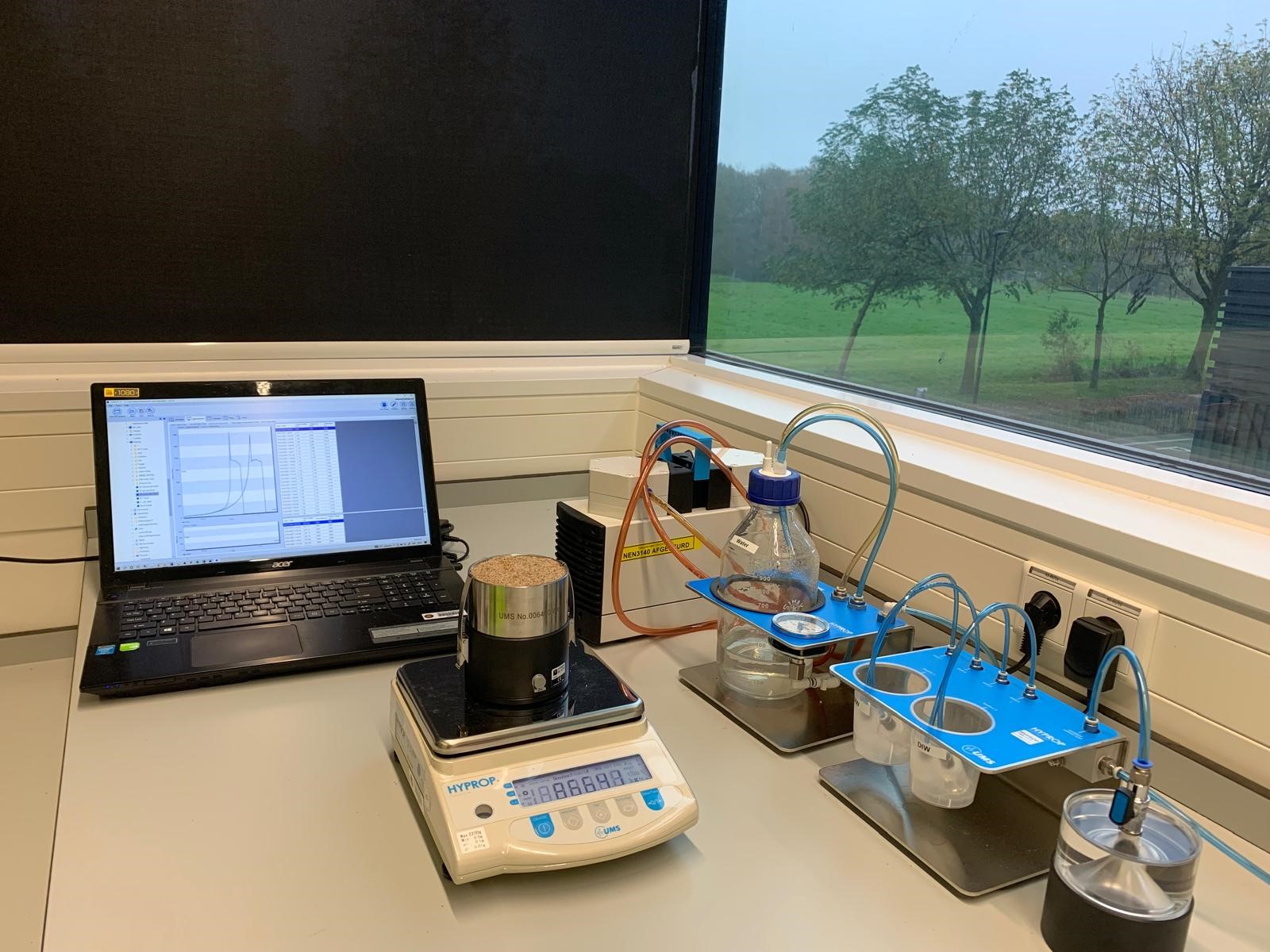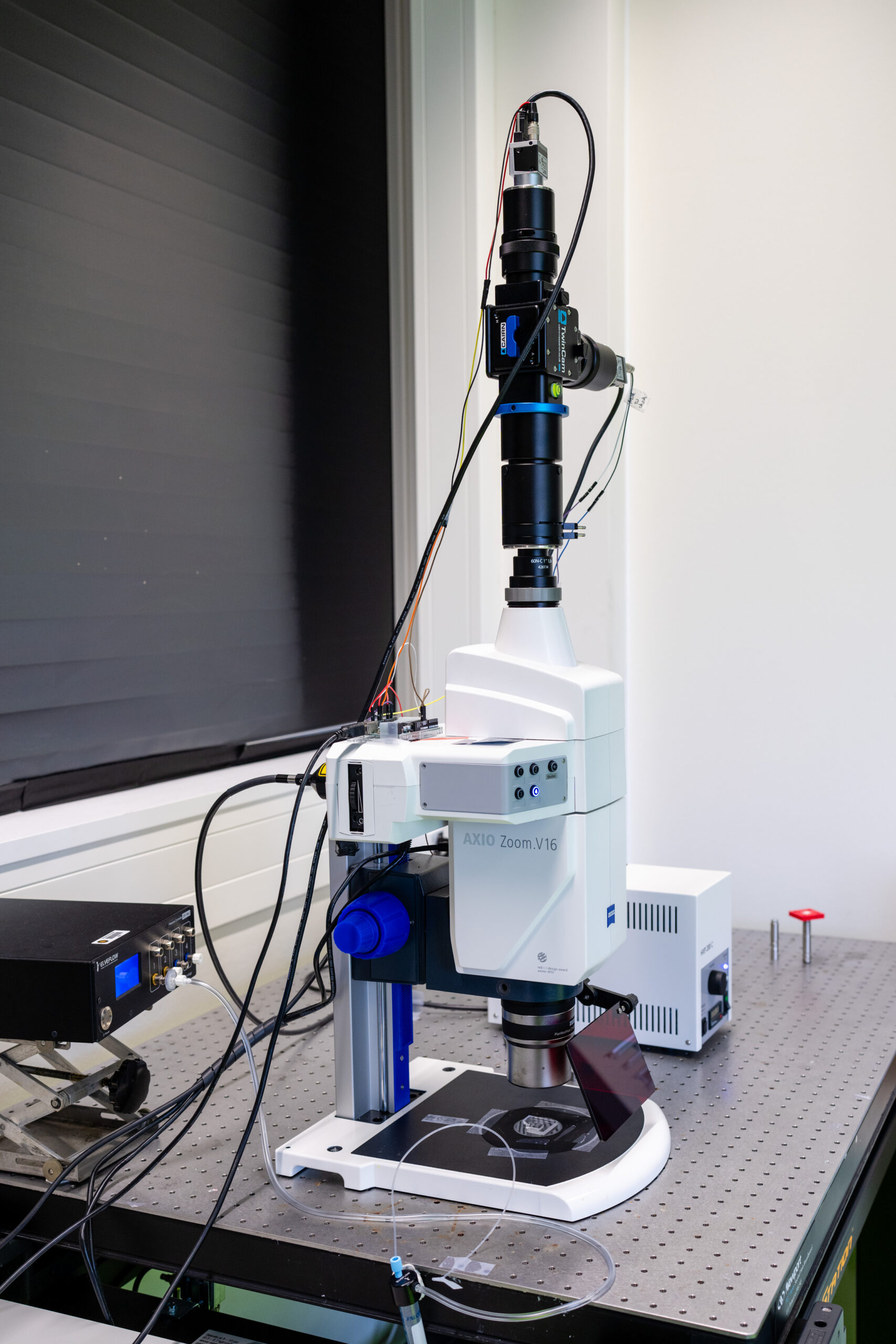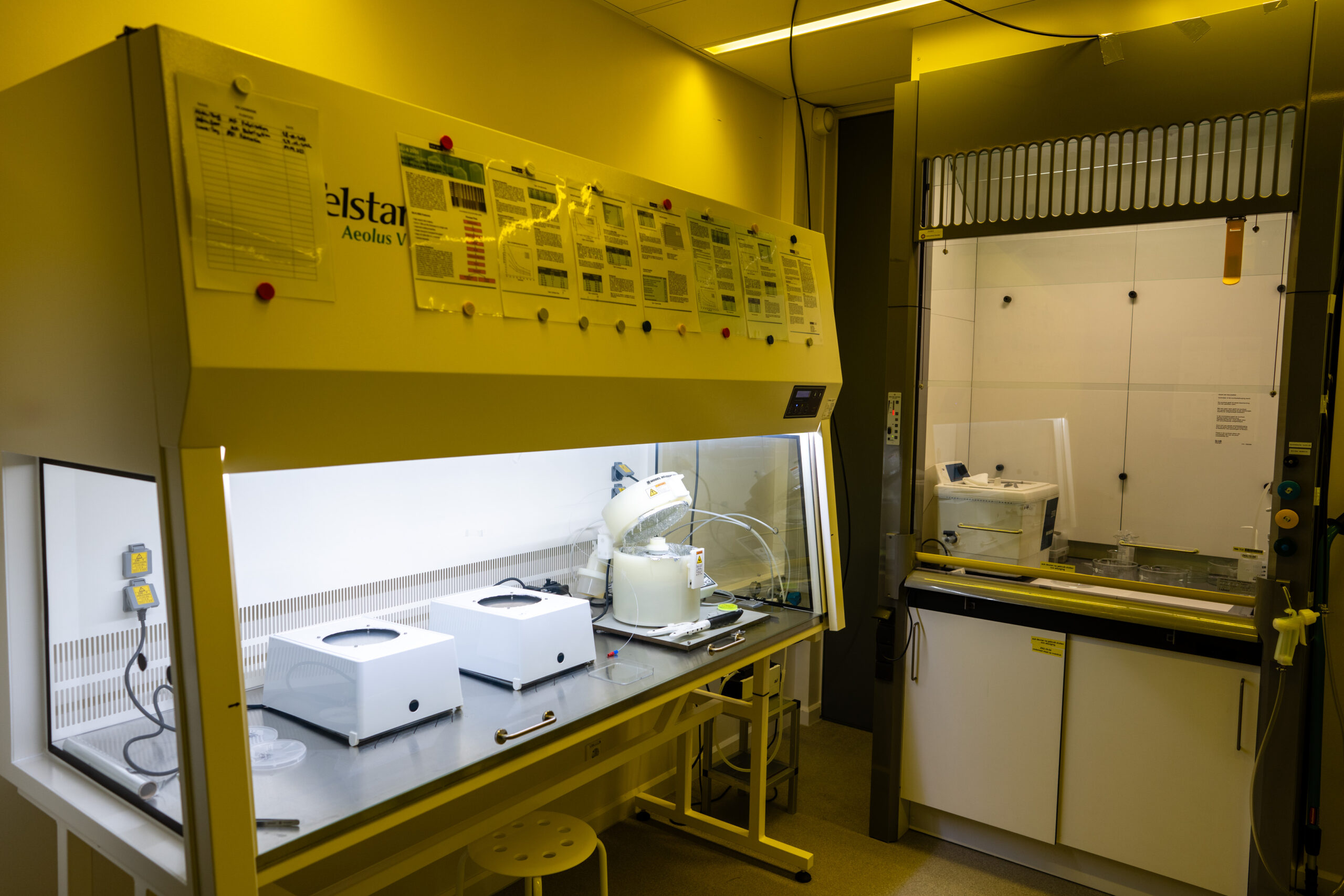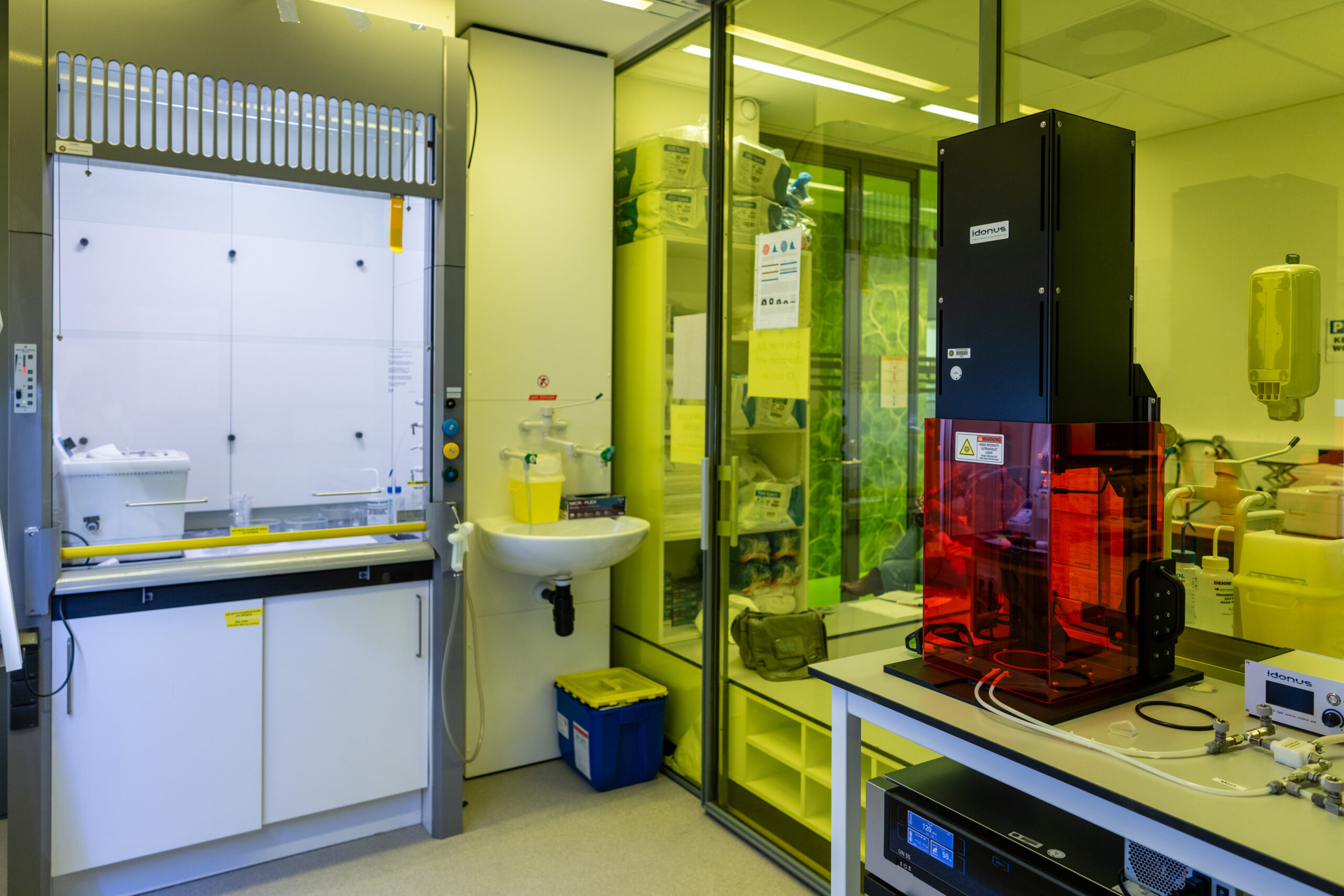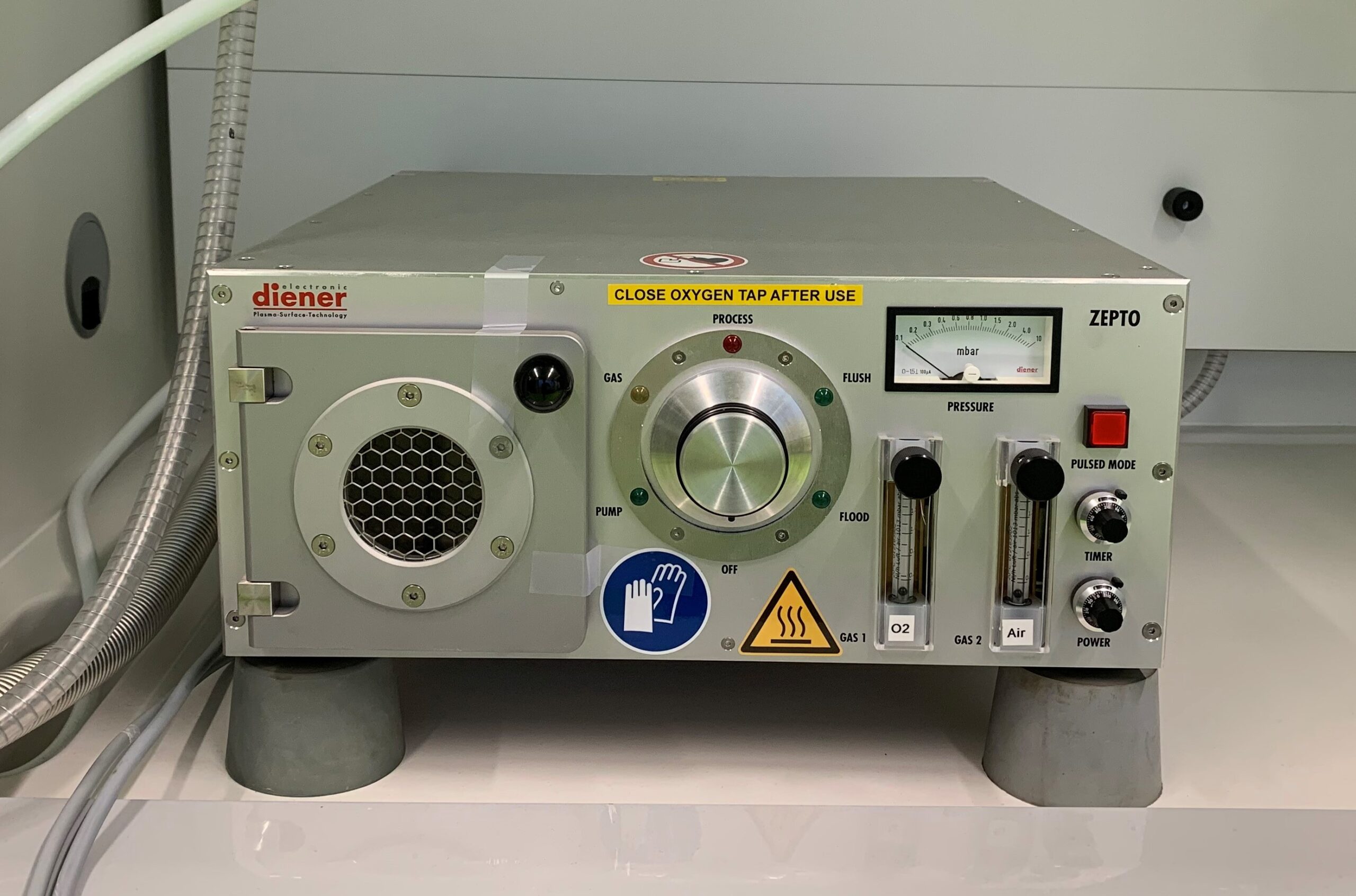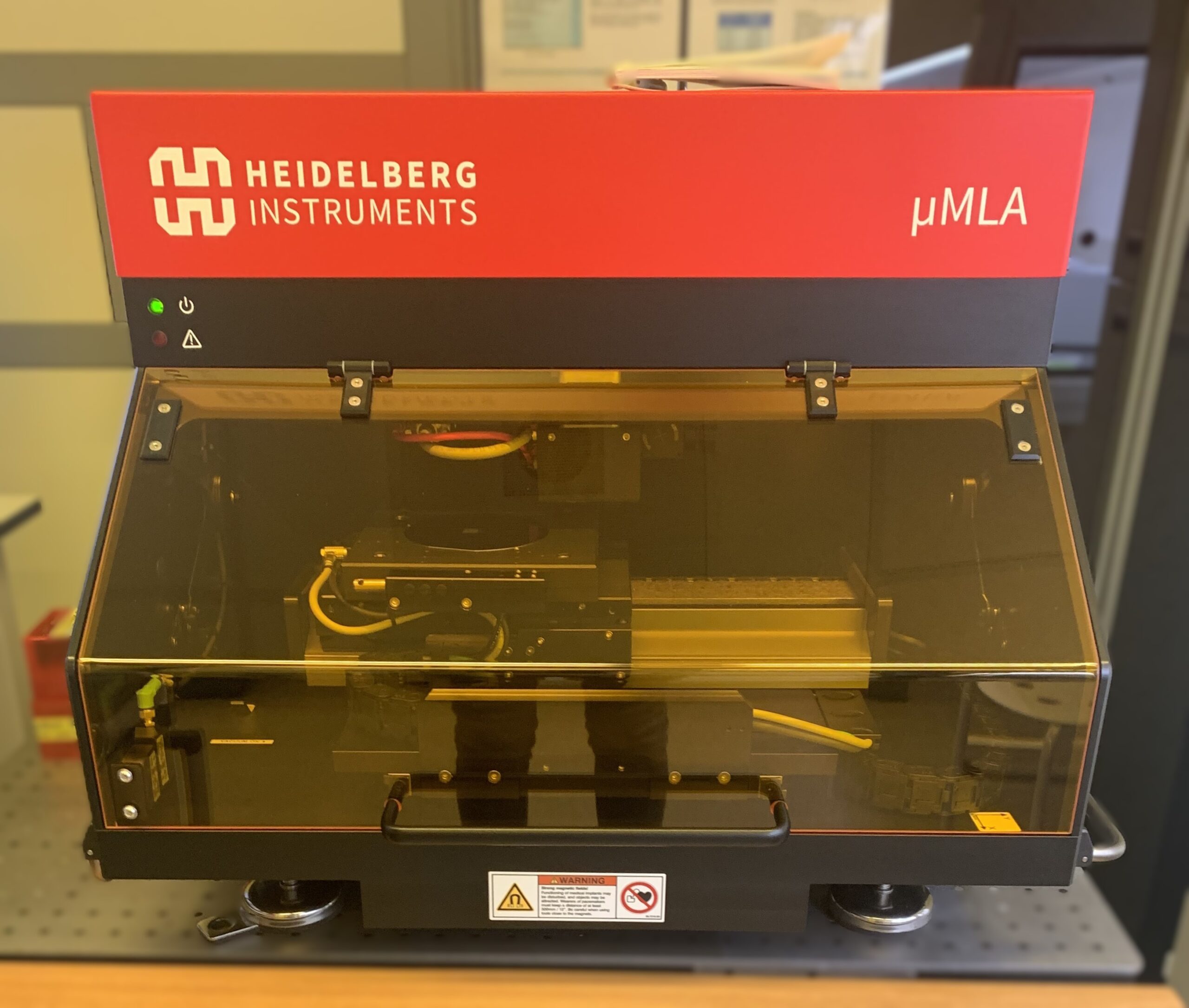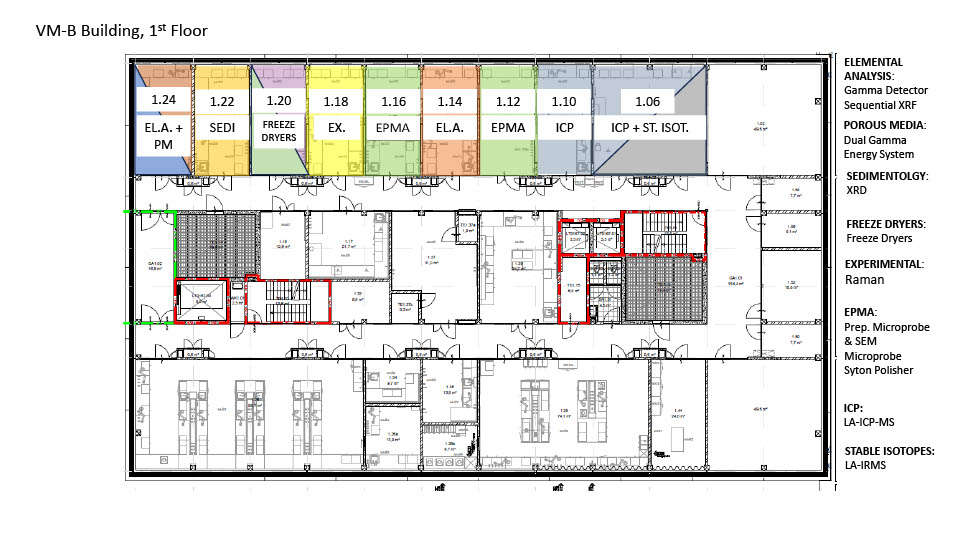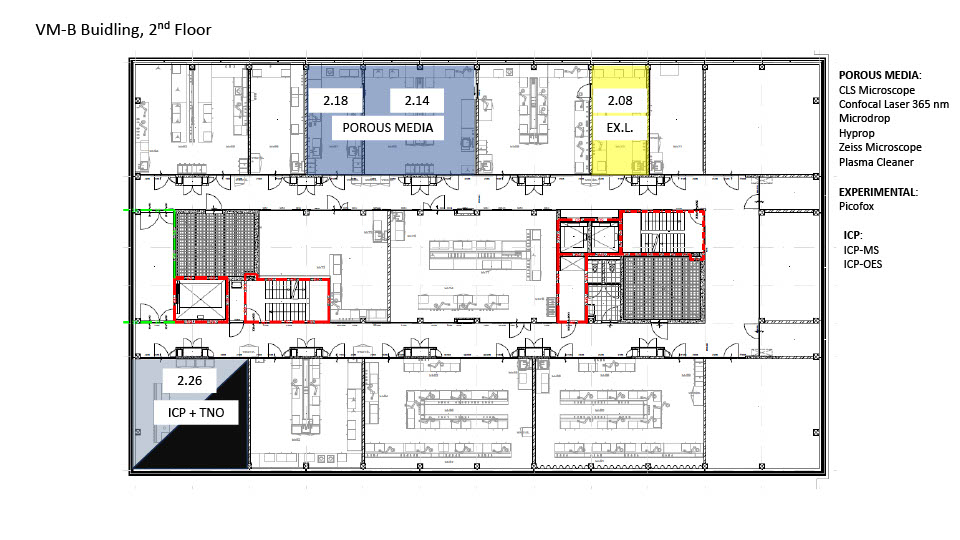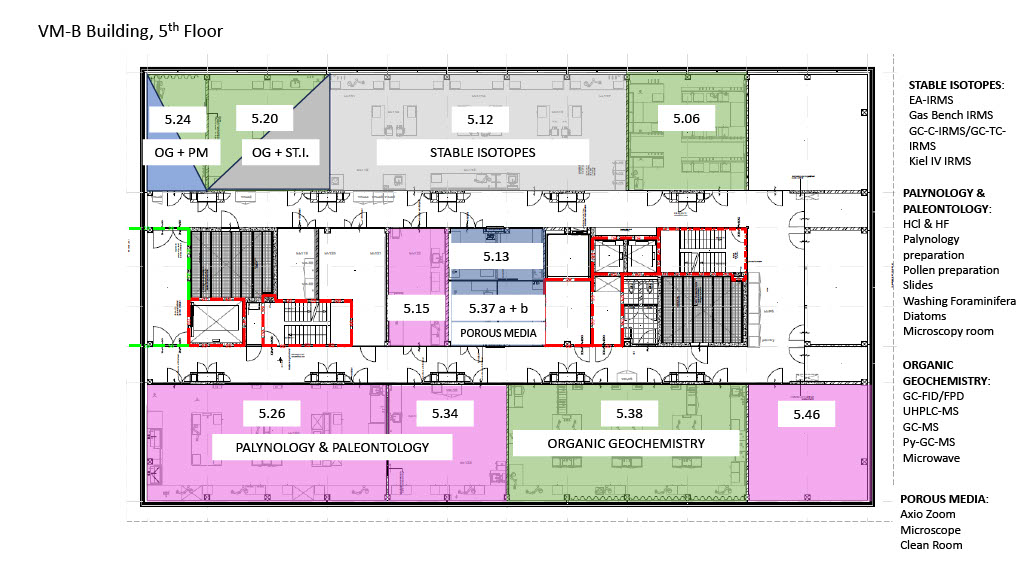Porous Media Lab
Our diverse projects include groundwater remediation; solute and pathogen transport in subsurface and unsaturated flows; particle transport and clogging in subsurface environments; mineral and salt precipitation; biomass growth in porous media; drying processes in porous materials; geological CO₂ storage; geothermal energy; and subsurface energy storage. Other porous material applications explored include ink penetration into paper, fuel cells, swelling particles, moisture absorption in products, microvascular flow dynamics, bacterial transport across mucus, and the porosity and permeability of human bones. The Porous Media Lab features a cleanroom equipped to create complex microfluidic models that mimic porous materials. Using four customized microscopic and optical setups we conduct experiments in the following areas: By integrating these experimental setups, we can analyze the dynamic interactions among these processes within porous materials. For more information, please contact us. Column and Tank Experiments The Porous Media Lab conducts column and tank-scale experiments to explore fluid flow, transport, clogging, and remediation processes in soils and sediments. Our experimental approaches include: Our experiments are complemented by advanced Darcy-scale simulations, which enhance our ability to interpret the results, apply different flow conditions, and optimize processes in hydrogeology, filtration, and environmental engineering applications. CLS Microscope(analysis) Dual Gamma Energy System(analysis) Laser Setup for FRAP(analysis) HYPROP System(analysis) On-axis Zoom Microscope(analysis) Spin Coater (prep) UV-Exposure(prep) Plasma Cleaner(prep) Direct Writer(prep)
Technical experts:
Scientific advisor:
Contact:
Mahin Baghery
Amir Raoof
porous.geolab@uu.nl
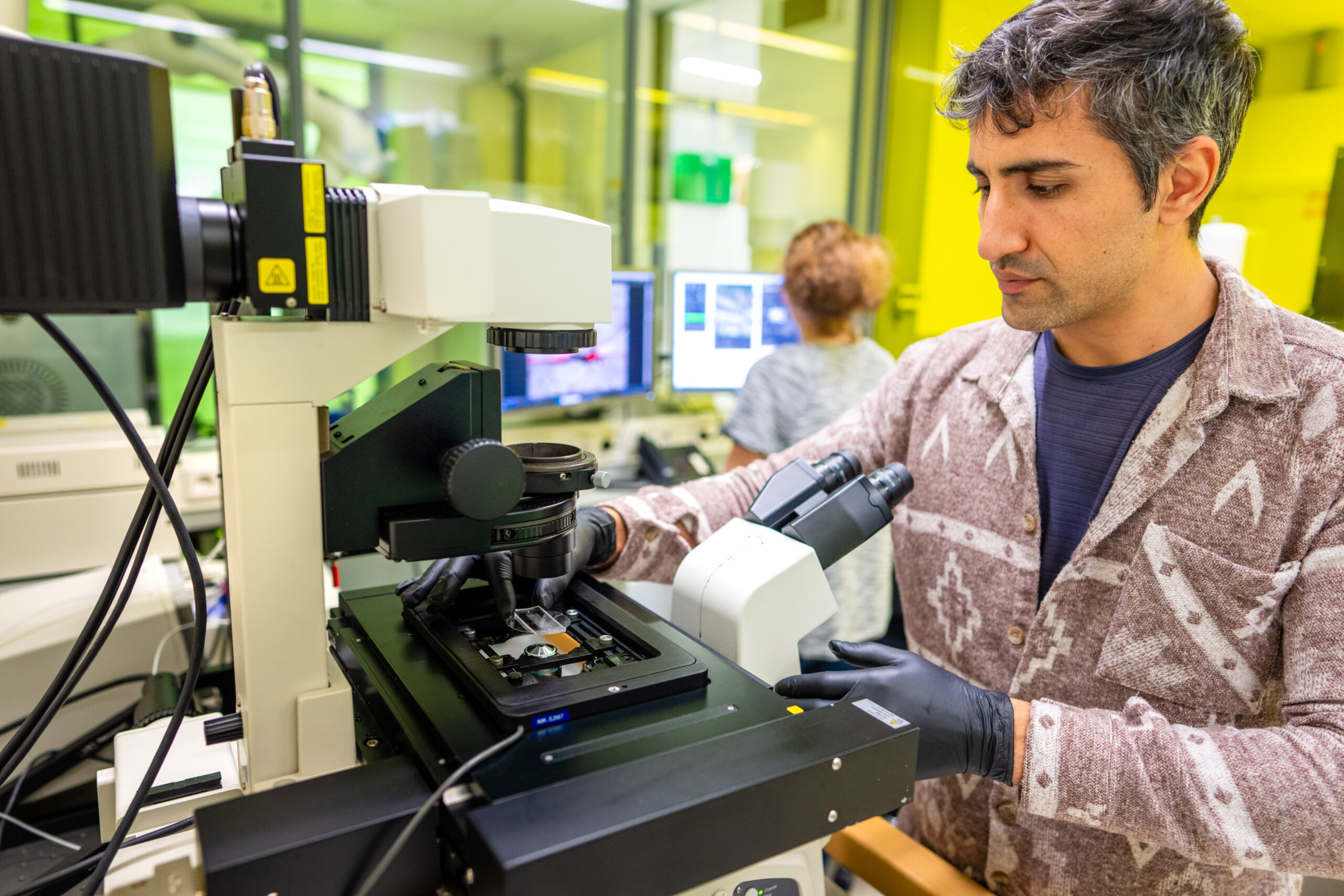 The Porous Media Lab stands at the forefront of research on complex flow and reactive transport processes in porous materials, covering diverse length scales. By uniquely integrating cutting-edge experimental methods with real-time imaging and advanced numerical modelling, our lab is at the forefront of studies in geosciences, as well as extending our research into engineering, biological, and medical applications through the Structures of Strength (SoS) centre.
The Porous Media Lab stands at the forefront of research on complex flow and reactive transport processes in porous materials, covering diverse length scales. By uniquely integrating cutting-edge experimental methods with real-time imaging and advanced numerical modelling, our lab is at the forefront of studies in geosciences, as well as extending our research into engineering, biological, and medical applications through the Structures of Strength (SoS) centre.